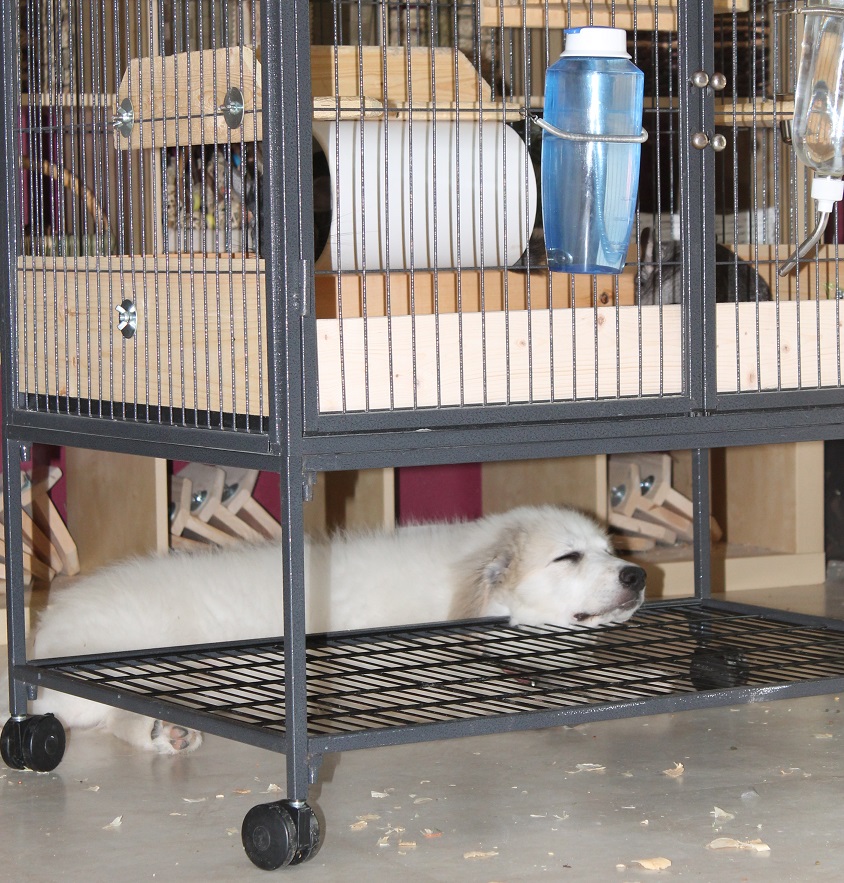Happy November everyone!
For the month of October, two (2) chinchillas were surrendered and two (2) chinchillas were adopted. We’ve had quite a number of folks contact us regarding pairbonding but fewer individuals looking to adopt for the first time. Even still, it amazes me that people can be obtuse enough to try contacting a shelter looking for chins to breed. It...just…never…ends. I can say this with the backing of experience as we are…
…now in our 10th year! November 1st 2008 was our official start date of Whimsy’s Menagerie. It’s been quite a ride! In that time we’ve stretched and grown, tried and failed, kicked and screamed and laughed a whole lot. What started as a homeschool project has become a lifestyle. We’ve settled in to a beautiful routine. Over the past decade we’ve managed to fine tune our operation. We have an easily recognizable signature for our cage accessories and chew toys and are always so thrilled when people tell us how well made everything is. We and our special needs student helpers thank you. Here is the original video of our early years.
We’re to the point now where some of our supplies and raw materials come by the pallet load. For the past two years we’ve been looking to move to a place that would allow for this expansion. We may have finally found that future home, but have been working out the details for the better part of this year. This is the cryptic news Whimsy has mentioned in past posts. Fact is, it’s been a very slow, laborious process with many, MANY closed doors, road blocks and issues. BUT, we seem to be on the fast track now. Time will tell. And speaking of time, during the nearly 10 years of operation, half of Whimsy’s children have graduated from college and moved on to pursue their life paths.
One funny story goes that when our webmistress (sassy looking first born on the right) graduated this past spring with her graphic arts degree, during one job interview the person nearly jumped out of her chair at the mention of Whimsy’s Menagerie. Apparently she’s a follower of ours. (If you’re reading this, thank you for the fun reaction.) Another time our hardware supplier had to actually contact Whimsy by phone (a highly restricted task!), he gushed that he felt like he was talking to a celebrity. How curious. In all honesty folks, I have no idea what I’m doing, but am sure getting good at it!
Being a single mom who works with power tools is somewhat of an oddity. Our home is on a corner lot with full view of Whimsy’s shop area. On more than one occasion we’ve actually had men approach Whimsy to say that she should let her husband do the tool work. Uh….
But we do like to have fun in that regard. Once, we picked up an especially large load from the lumber yard. Standing in line to check out a couple of men walked by with quizzical expressions on their faces. I jumped at the chance to have some fun and asked my daughter if she thought the lumber would fit in her hatchback. Another time the cashier made a comment about the big, beautiful stack of well grained lumber and our plans for it. I innocently said, "it’s for the firepit. We’re just going to burn it." He nearly cried. We had to console him. Another time at a woodwork shop our friend (who works there) commented to his co-worker about my woodworking skill. At which point I whipped out a raw apple wood wedge that just happened to be in my pocket and proudly displayed my “craftsmanship”. *cough* The confused look on the guy’s face was priceless.
And then there are the chinchillas. We’ve met all shapes, sizes, temperaments, conditions and colors. We’ve been peed on, bitten, groomed and snuggled. We’ve helped chins through medical conditions and eased some over the rainbow bridge. We’ve tamed some. We’ve found homes for lots and lots, and sadly, received some back. Some we’ve taken back by legal means when an adoption contract was broken. We’ve boarded chins, bonded chins and even bought chins. Whimsy started as a pet owner, dabbled a bit with the show circuit, and finally settled into hard core rescue work. Fact is, the chinchillas deserve it. Not to be treated as objects. Not to be used to fulfill some misplaced maternal desire for a baby, and certainly not as machines to pump out living creatures for financial gain. These adorable, sentient creatures are worthy. Just ask them. They’ll tell you if you listen.





















